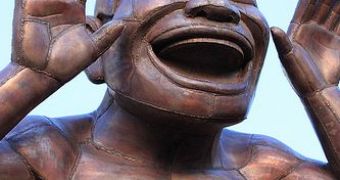Laughter plays a key role in group communication and dynamics, even when there is absolutely nothing funny happening, a new study carried out by North Carolina State University claims.
The subjects of this study were members of the jury in a capital murder case, and the researchers wanted to know exactly what role plays laughter in their deliberations.
They had access to the full transcript of jury deliberations in the 2004 trial of Mark Ducic in Ohio, a man charged with two murders and 30 additional counts, mostly related to drug violations.
Dr. Joann Keyton, a professor of communication at NC State and co-author of the study said that this is rather a rare opportunity “to gain insight into the jury's deliberative process, [and] as far as we know, this is the only jury transcript available for study from a death penalty case.”
After looking at the transcript, both Keyton and her co-author, Dr. Stephenson Beck of North Dakota State University, were stunned by the amount of laughter.
Keyton says that it was rather interesting, as they were focused on the way people communicate within a group when performing a common task, and this was a chance of studying the role that laughter has in the way “people signal support – or lack of support – for other people's positions within a group.”
The results of the study established that laughter can be used as a tool to control communication and influence group dynamics.
Keyton gives the example of a juror that was very loud and made it clear from the beginning that she was against the death penalty, so in on instance when she agreed with other jury members, one of them said “She's so smart”, and started general laughing among jurors.
The professor of communication explains that this “had the effect of further distancing her from the rest of the jury.”
“When juries form, they don't know each other,” Keyton continued.
“So part of the jury process is to create relationships within the group – for example, figuring out who thinks like me, who will have the same position I have; there are power dynamics at play.”
Furthermore, “laughter matters, even when it is a serious group task,” because it is a natural thing and when people are in a formal setting they try to suppress it, “so, when it happens, it's worth closer examination.”
Finally, Keyton says that “laughter is one way of dealing with ambiguity and tension in situations where a group is attempting to make consequential decisions and informal power dynamics are in play.”
“There are very few opportunities to see group decision making, with major consequences, in a public setting, it is usually done in private, such as in corporate board meetings or judicial proceedings.
“But laughter is something that occurs frequently, and not only because something is funny,” she explains.
This study is one of the few of its kind as there is very little research on the role of laughter in communication, particularly when humor is not involved.

 14 DAY TRIAL //
14 DAY TRIAL //